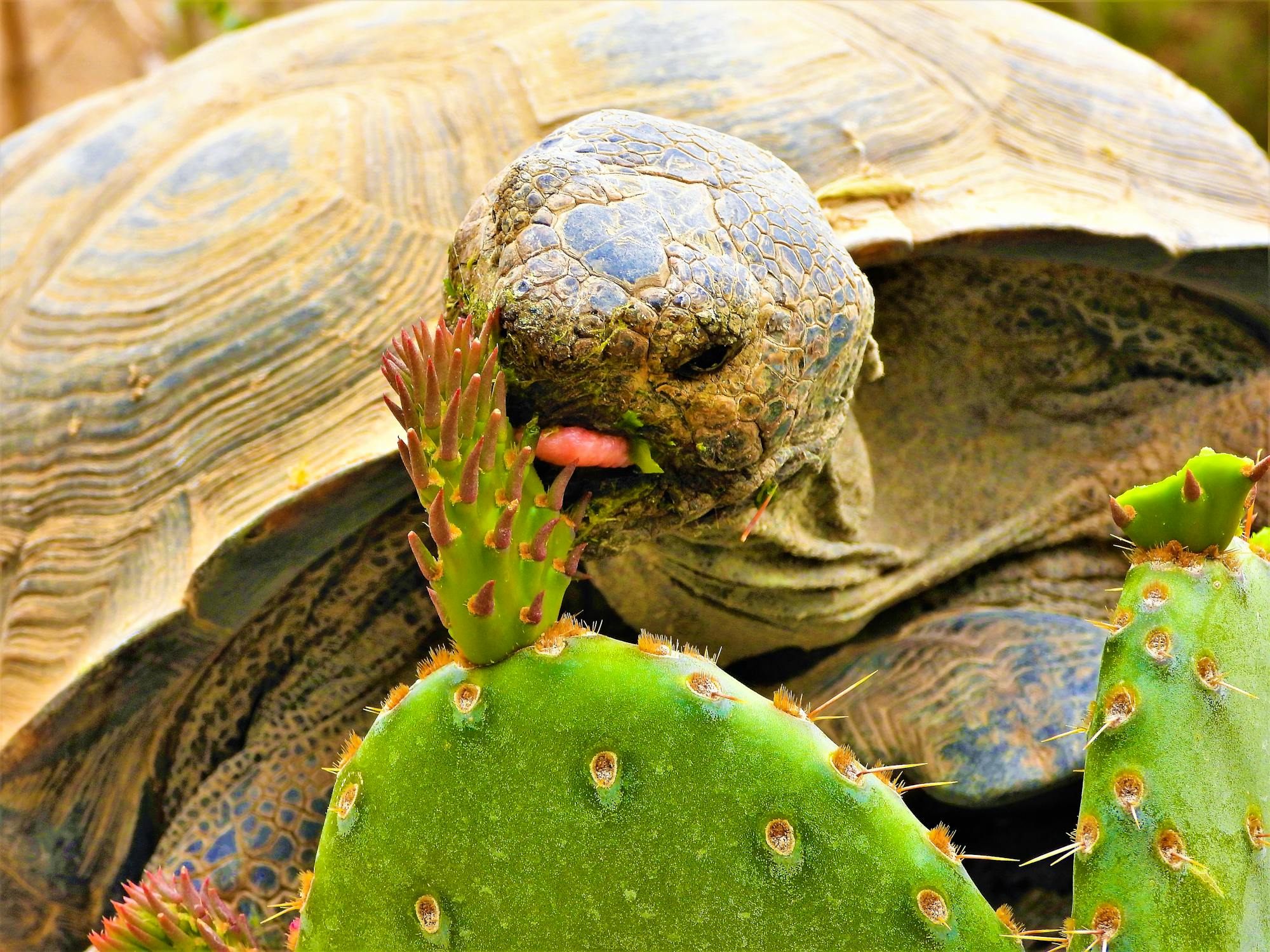The Mojave Desert in California looked different 50 years ago. Beginning in 1975, I had the honor of surveying for desert tortoises in the Western and Eastern Mojave Desert. At that time, the adult density ranged from about 50 to over 300 per square mile. By 2019, there were less than 10 per square mile in most areas. This decrease is so great that these populations are no longer viable, and the desert tortoise is on a path toward extinction.
Thankfully, California’s Fish and Game Commission voted to uplist the desert tortoise from threatened to endangered in April 2024. This is a huge step towards saving this species, but there’s still much to be done. Learning about desert tortoises and sharing their story is one simple way you can join us in saving these important animals!
Are tortoises turtles?
Yes, all tortoises are turtles, but not all turtles are tortoises. Generally, “turtles” are reptiles with bony shells encasing their bodies and belong to the scientific order Testudines. Tortoises specifically belong to the scientific family Testudinidae. Tortoises also live entirely on land, whereas other families of turtles, like terrapins and sea turtles, spend most of their time in the water.
Desert tortoises in the Mojave Desert (Gopherus agassizii) are a distinct population located west and north of the Colorado River. They have existed for approximately 20 million years and survived in habitats that, over time, have changed from forests to deserts. Desert tortoises are remarkable for their ability to adapt to changing environments.
As a desert-dwelling species today, what is their primary source of water?
Desert tortoises primarily get their water from the plants they eat, like wildflowers. They also occasionally drink surface water left from spring and summer thunderstorms.
What role do desert tortoises play in their ecosystem?
They eat native wildflowers and grasses, facilitating new plant growth by dispersing the seeds as they move throughout their habitat. They dig burrows for shelter during the winter months, which are also used by other species such as snakes, burrowing owls and rodents.
Desert tortoises are an indicator of the health of their habitat. Significant declines of their populations indicate that the ecosystem is deteriorating. An area not able to support these reptiles is also unlikely to support healthy populations of other species sharing the same habitat.
What is happening to their habitat that is causing this otherwise resilient species to decline?
Scientists estimate the majority of desert tortoise habitat will become uninhabitable in the next 50 years because of climate change. Climate change will increase ambient air temperatures which results in loss of soil moisture and decreases the abundance of wildflowers, which are needed to support these tortoises.
Additionally, a large amount of high-quality desert tortoise habitat has been lost to human land uses. Military base expansions, solar energy projects, road construction, livestock grazing and excessive off-highway vehicle (OHV) recreation are all occurring within desert tortoise critical habitats. The U.S. Army, alone, plans to use about 60,000 acres within Fort Irwin—a base within the Mojave Desert that overlaps with desert tortoise critical habitat. The Army plans to capture and relocate up to 1,100 adult desert tortoises from the area so they aren’t crushed during mechanized training exercises.
OHV use, however, is probably the biggest threat to desert tortoises because it is so widespread and intense in the western Mojave Desert. These animals are slow moving and cannot get out of the way of fast-moving vehicles. The growing OHV network of dirt roads and trails through desert tortoise habitat is not compatible with the conservation of this imperiled species. OHV use overall must be greatly reduced in both extent and intensity, especially in the western Mojave Desert.
If we were able to remove these threats tomorrow, would we see the species recover quickly?
We would likely start to see a rebound in populations, but it could take decades for the species to fully recover. Desert tortoises are long-lived and slow to reproduce. They reach sexual maturity between 15 and 20 years of age and only lay eggs once or twice in the spring and early summer. Then, only about 2% of hatchlings make it to adulthood. This is another reason why the survival of adult desert tortoises is crucial for maintaining a stable population.
If they aren’t sexually mature until 20 years, how long do these tortoises live?
Typically, desert tortoises can live 50 to 80 years. The average lifespan for wild tortoises, however, is much lower due to mortality caused by human uses and droughts caused by climate change.
What can we do to help desert tortoises?
The best thing we can do to help desert tortoises is to protect habitats projected to remain suitable for the species and those that will become suitable as climate change advances. If you live in California or Nevada, ask your elected officials in Congress and state representatives to appropriate additional funding for desert tortoise recovery and pass laws and regulations that strengthen the protection of habitat needed to recover the species.
We hope California’s uplisting of the desert tortoise to endangered will encourage more projects to improve conditions throughout the habitat and place more restrictions on the use of its remaining habitat. Ultimately, however, it will take all of us joining together to act quickly to save these incredible animals from extinction!









